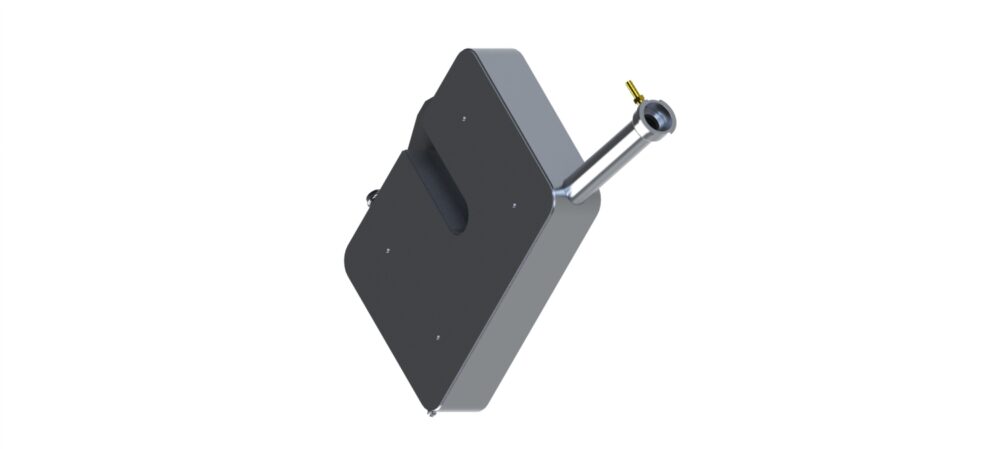A radiator surge tank, also known as an overflow tank, expansion tank, or coolant reservoir, is a component of a vehicle’s cooling system. Its primary function is to provide a space for excess coolant to expand and contract as the engine heats up and cools down. Here’s what a radiator surge tank does:
-
Coolant Storage:
The surge tank serves as a reservoir to hold coolant when the engine is hot and under pressure. As the coolant temperature increases, it expands, and the excess coolant flows into the surge tank. Similarly, when the engine cools down, the coolant contracts and it can be drawn back into the radiator from the surge tank.
-
Coolant Recovery
In case of coolant loss due to evaporation or minor leaks, the surge tank helps maintain the proper coolant level in the radiator. When the engine cools down, it creates a vacuum, and the radiator cap allows coolant to be drawn back from the surge tank into the radiator, preventing air pockets or cavitation.
-
Pressure Relief
The surge tank also plays a role in regulating the pressure within the cooling system. When the engine is running and the coolant heats up, the pressure increases. If the pressure exceeds the recommended limit, the radiator cap valve opens, allowing coolant to flow into the surge tank instead of escaping from the system.
-
Visual Coolant Level Indicator
Many surge tanks have a transparent or translucent design, allowing for a visual inspection of the coolant level without opening the radiator cap. This feature helps drivers and technicians quickly assess the coolant level and identify any potential issues.
Overall, the radiator surge tank helps maintain the proper coolant level, allows for coolant expansion and contraction, aids in pressure regulation, and provides a convenient way to monitor the coolant level without accessing the radiator directly. It plays an important role in ensuring efficient and effective cooling system operation, which prevents engine overheating and maintains optimal engine performance.
When To Replace Surge Tanks
The lifespan of a semi-truck’s radiator surge tank can vary depending on factors such as the quality of the tank, maintenance practices, and the operating conditions of the truck. While there is no specific mileage or time interval for replacing a surge tank, there are a few signs that indicate it may be time for a replacement:
-
Leakage
If you notice any signs of coolant leakage around the surge tank, such as puddles or stains under the truck, it could indicate a crack or a faulty seal in the tank. Coolant leaks can lead to a loss of coolant, resulting in engine overheating and potential damage.
-
Cracks or Physical Damage
Inspect the surge tank visually for any cracks, warping, or other physical damage. Over time, exposure to heat, pressure, and vibration can cause the tank to weaken or develop structural issues. If you notice any significant damage, it is advisable to replace the surge tank.
-
Coolant Contamination
Check the condition of the coolant inside the surge tank. If you observe any signs of contamination, such as oil or debris in the coolant, it could indicate a problem with the surge tank or a more severe issue with the cooling system. In such cases, it’s recommended to have the surge tank inspected and replaced if necessary.
-
Age and Maintenance History
If the surge tank is several years old or has a history of inadequate maintenance, it may be prone to failure. Over time, plastic tanks can become brittle, and seals can deteriorate. If you’re uncertain about the surge tank’s condition and it has not been replaced for a long time, it might be wise to consider a replacement.
-
Cooling System Issues
If you’re experiencing recurring cooling systems problems, such as coolant loss, overheating, or frequent pressure issues, and other components have been ruled out as the cause, the surge tank could be a potential culprit. In such cases, it may be necessary to replace the surge tank as part of troubleshooting and resolving the cooling system issues.
If you notice any of these signs or suspect a problem with your semi-truck radiator surge tank, it’s recommended to consult a qualified mechanic or technician. They can assess the situation, perform a thorough inspection, and provide guidance on whether a replacement is necessary. Finally, order your surge tanks for Freightliner and more today from the experts at SouthPOINTE Radiator!








